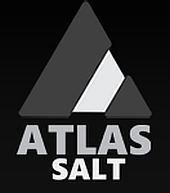 Focus Graphite assays 88 m of 12.8% Cg at Lac Tetepisca
Focus Graphite assays 88 m of 12.8% Cg at Lac Tetepisca
FOCUS GRAPHITE CONFIRMS SIGNIFICANT MINERALIZATION AT DEPTH BELOW A DISCOVERY OF 88.5 METRES GRADING 12.82% GRAPHITIC CARBON AT ITS LAC TETEPISCA PROJECT
Focus Graphite Inc. has intersected significant widths of graphitic mineralization ranging from 95 metres to 110 metres in thickness (i) in a new zone at its wholly owned Lac Tetepisca project southwest of the Manicouagan reservoir in Quebec.
Four fences of holes were spaced 200 metres apart, covering a 600-metre strike length of this new zone in a drill program designed to test surface mineralization found in trenches down to a vertical depth of approximately 100 metres.
The Manicouagan-Ouest graphitic corridor was discovered by Focus in 2012, and then exposed and channel sampled in two trenches in the fall of 2013. Assays up to 88.5 metres at 12.82 per cent graphitic carbon and 84 metres at 11 per cent graphitic carbon were obtained. The 2014 drill hole assay results are pending.
Preliminary metallurgical characterization of a 10-kilogram composite sample achieved a carbon content averaging 94.7 per cent total carbon for all flakes above 200 mesh, including 97.7 per cent total carbon for plus 80 mesh flake — a quality that is critical to the lithium ion battery market. The concentrate was produced by only a three-stage cleaner flotation test. This suggests that the impurities are loosely attached to the surface and perimeter of the flakes, and are not embedded within the graphite mineral layers of individual flakes, similar to what has been shown at Lac Knife. The concentrate grades could be further improved through secondary polishing and cleaning, as was shown to be the case with the Lac Knife concentrate.
This summer, Abitibi Geophysics of Val d’Or, Que., completed a combined magnetic electromagnetic ground IMAGEM geophysical survey that covered 47 kilometres of grid lines over the Manicouagan Ouest graphitic corridor. This time domain IMAGEM geophysical system has a high spatial resolution to allow for a more detailed analysis of the electromagnetic conductors within the anomalous zone.
The graphitic corridor is outlined by electromagnetic anomalies that are very well explained by the trenching and drilling results, and the drill intercepts correlate very well with the electromagnetic anomaly boundary. The discovery zone that was drilled has a geophysical signature that extends for more than 200 metres to the northeast and over 700 metres to the southwest for a total strike length of 1,500 metres, and it is also open at depth.
Don Baxter, PEng, president and chief operating officer of Focus Graphite, said: “We are very excited about these drilling results that confirm significant widths of mineralization at depth and the potential that this property may hold. Together with the positive, preliminary metallurgical test results yielding high carbon content of medium and fine flakes, our Lac Tetepisca project is very promising. So far it compares favourably in terms of length, width and grade to our Lac Knife graphite deposit.
“Furthermore,” Mr. Baxter said, “We are able to apply our operational and metallurgical experience, and what we have learned from developing the Lac Knife spherical graphite to the Lac Tetepisca project. Early indications are that it may produce a similar high-quality product. At Lac Knife we have shown that we can take the less desirable finer-sized flake concentrates and transform them into a 98 per cent carbon concentrate that is potentially higher valued. This product is in high demand for lithium ion batteries.
“Tetepisca’s fine flake fraction shows similar qualities to what we have experienced at Lac Knife. Further tests are warranted, as this gives Focus a second option to enhance the company’s midterm growth profile and show a potential for a larger quantity of spherical graphite. However, our near-term objective remains Lac Knife’s project financing and development,” Mr. Baxter said.
(i) Intersections of graphitic mineralization are expressed as core length; however, the drill holes crosscut the envelope of the mineralized zone strike and dip at a high angle.
Trenching program in 2013
In the fall of 2013, two trenches (MO-TR-01 and MO-TR-02) that measured 175 metres and 167 metres in length, respectively, tested a portion of the Manicouagan-Ouest graphitic corridor. Assays results from these trenches are listed in the attached table.
TRENCHING PROGRAM RESULTS IN 2013
Total Intersection
length From To length Cg
Trench Azimuth (m) Intercepts (m) (m) (m)(ii) (%)
MO-TR-01 N 128 175 Intersection 78.0 162.0 84.0 11.01
Including 78.0 127.5 49.5 15.03
Intersection 39.0 45.0 6.0 6.49
MO-TR-02 N 128 167 Intersection 45.0 133.5 88.5 12.82
Including 69.0 78.0 9.0 16.51
Including 94.5 133.5 39.0 18.04
(ii) Intersections are not true thicknesses but expressed as channel sample
lengths. However, the trenches crosscut the strike of the mineralized zone
envelope at a high angle. Mineralized intersections are calculated with Cg
greater than 5 per cent over a minimum of six metres; maximum internal
dilution was three metres; there is no external dilution considered.
Trenches are perpendicular (azimuth N128) to the electromagnetic corridor and spaced 225 metres apart. A total of 104 representative, channel samples (1.5 metres long) from trench MO-TR-01 and 98 samples from trench MO-TR-02 were collected using a rock saw, and shipped to IOS Services Geoscientifiques sample preparation facilities in Chicoutimi, Que.
The prepared samples were sent to ALS Minerals in Vancouver for graphitic carbon and total sulphide analysis using LECO induction. One of every three samples was also sent to ALS for a 48 multielement analysis using ICP methods.
With respect to the quality assurance/quality control program, blanks, standards and duplicates were introduced, representing roughly 15 per cent of the analyses. A map showing the location of the trenches and the drill holes is available on the company’s website.
Metallurgical and mineralogical studies
With an objective to characterize the mineralization, Focus awarded a contract to conduct preliminary metallurgical characterization to SGS Canada Inc. of Lakefield, Ont. One 10-kilogram composite sample underwent a test program to provide an indication of flake size distribution that can be obtained in a graphite concentrate by means of standard mineral processing methods.
The results were very good taking into account a head grade of 20 per cent graphitic carbon as well as an intermediate combined third cleaner concentrate grade of 91.8 per cent total carbon analysis, and the good metallurgical response after only three cleaner stages. Further, the carbon recovery into the third cleaner concentrate was very good at 94.2 per cent, especially when taking into account that these results were obtained in an open circuit cleaner test and not a locked cycle flotation test with internal circulation of the intermediate cleaner flotation tailings.
Also worth noting is that only a coarse primary grind will be required suggested by the rougher tails yielding a size distribution with a P80 of 340 microns and a combined carbon recovery of 98.1 per cent into the flash and rougher concentrate.
The graphite recovery into combined rougher and flash flotation concentrate is expected to be even higher than 98.1 per cent, as the rougher tails would contain the majority of the carbonate and organic carbon material, which are included in the total carbon assay. Hence, a primary grind of 500 microns or even coarser may be possible without encountering excessive graphite losses and possible flake damage.
The very high carbon content grade achieved in this preliminary cleaner flotation test suggests that the impurities are attached to the surface of the flakes and are not embedded within the graphite mineralogical layers. It is expected that the concentrate grades could be further improved through secondary polishing and cleaning. This was shown to be the case with the Lac Knife concentrate.
LAC TETEPISCA PROJECT: ORIENTATION METALLURGICAL RESULTS
(size by size analysis of third cleaner concentrate)
Assays
Weight Weight % C Distribution C
Product concentrate (g) (%) total(iii) total %
+48 mesh (+300 microns) 0.5 0.1 0.0
+65 mesh (+212 microns) 11.0 2.6 95.8 2.8
+80 mesh (+180 microns) 15.9 3.8 97.7 4.1
+100 mesh (+150 microns) 26.9 6.5 96.1 6.8
+150 mesh (+106 microns) 74.0 17.8 96.0 18.6
+200 mesh (+75 microns) 78.4 18.9 92.2 18.9
+325 mesh (+45 microns) 105.3 25.3 89.6 24.7
-325 mesh (-45 microns) 103.7 24.9 88.8 24.1
Total concentrate 415.7 100.0 91.8 100.0
(i) All carbon analyses were performed by SGS Canada Inc. and are
reported as total carbon. The analytical methods that were used to
determine the metallurgical results included total carbon analysis by Leco
on the final concentrates.
Focus also had IOS Services Geoscientifiques of Chicoutimi, Que., conduct a petrographic mineralogical study of two trench grab samples from the Lac Tetepisca project, with the objective to characterize the general in situ content of large graphite flakes within the mineralization. It should be noted that the variability between small samples can be considerable in graphite deposits. Visual observations of these two separate grab samples indicate good, large-flake content.
The report included microscopic observations of both samples that contain approximately 25 per cent graphite. The study indicated a high proportion of large and very large graphite flakes (plus 48 mesh or greater than 200 microns).
The high large-flake content observed in the two samples was 80 per cent and 74 per cent, respectively. This contrasts the lower large-flake content observed in the concentrate produced by the bench scale (10-kilogram) preliminary metallurgical tests. This further supports the probability that only a coarse primary grind would potentially be required to liberate the large graphite flakes from the mineralized host rocks. More work will be undertaken in this regard.
Exploration drilling campaign in 2014
Exploration drilling included 1,875 metres of drilling in 16 drill holes oriented perpendicular to the strike of the kilometric electromagnetic conductor defined by a combined MAG-electromagnetic airborne geophysical survey conducted in the spring of 2013. The periphery of the zone was more accurately outlined by ground geophysics using a beep mat instrument in the summer of 2013 and the MAG-IMAGEM ground survey completed the following summer in 2014.
IOS supervised the drilling campaign that was performed by Forage Rouillier of Amos, Que.
A drill hole location map that includes the electromagnetic anomalous zone boundary as well as the trench locations is available on the company’s website.
About the Lac Tetepisca graphite project
The Lac Tetepisca project is wholly owned by the company and is located to the southwest of the Manicouagan reservoir in Quebec. Focus acquired 100 per cent of the project’s mineral rights from a third party in 2011.
The project consists of 102 contiguous map-designated claims covering 5,503.08 hectares. The project is located in the southwest Manicouagan reservoir area, 234 kilometres north-northwest of Baie-Comeau, in the Cote-Nord administrative region of Quebec.
The project is accessible year-round by a network of logging roads that connect to Highway 389 that connects Baie-Comeau on the coast to the project area.
The Lac Tetepisca project is located in the Grenville geological province of Quebec. The Manicouagan-Ouest graphitic corridor is located within the Nault formation of metasedimentary rocks, and is composed of rocks that are fine- to medium-grained quartz-feldspar-biotite paragneisses and schists with local occurrences of garnet and kyanite.
Fine to coarse graphite flakes and associated sulphides make up 10 per cent to 20 per cent of the rocks, with more than 50 per cent in strongly mineralized zones.
A map of the Lac Tetepisca project showing the location of the Manicouagan-Ouest graphite-bearing corridor is available on the company’s website.
Quality assurance/quality control
The entire drill cores were logged at the Lac Tetepisca camp and shipped to the IOS Services Geoscientifiques facilities in Chicoutimi for sample preparation. The HQ-calibre drill core is sawed in two pieces. One of the half-core samples is kept for upcoming metallurgical tests. The other half core is sawed in two quarters, one for geochemical analysis while the other quarter is kept as a witness sample. Quarter core samples were dried before processing for density measurement, crushing and grinding at the IOS sample preparation laboratory.
Once prepared, the samples are sent to the Consortium de Recherche Appliquee en Traitement et Transformation des Substances Minerales (COREM), an ISO/IEC 17025:2005-certified facility in Quebec City. IOS introduced standards, duplicates (sawing, crushing or grinding duplicates) and blank samples into the batch of core sample as part of the quality assurance/quality control program.
Qualified person
The scientific and technical content of the news release was either prepared, reviewed and approved by Benoit Lafrance, PhD, Geo (Quebec), vice-president of exploration for Focus and a qualified person under National Instrument 43-101 guidelines.
About SGS Metallurgical Services (Lakefield)
SGS Canada Inc. is recognized as a world leader in the development of concentrator flow sheet design and pilot plant testing programs. SGS’s metallurgical services division was founded over half a century ago. Its metallurgists, hydro-metallurgists and chemical engineers are experienced in all the major physical and chemical separation processes utilized in the recovery of metals and minerals contained in resource properties around the world.
The information pertaining to the metallurgical test program completed by SGS that is presented in this news release has been reviewed and approved by Oliver Peters, MSc, PEng, MBA, a consulting metallurgist working for SGS Canada. Mr. Peters has extensive experience in the development of metallurgical processes and has managed the majority of the graphite testing programs conducted at SGS in recent years, and is a qualified person under NI 43-101 guidelines.
Note: mineral resources are not mineral reserves and do not have demonstrated economic viability.
http://www.focusgraphite.com/category/news-releases/
































